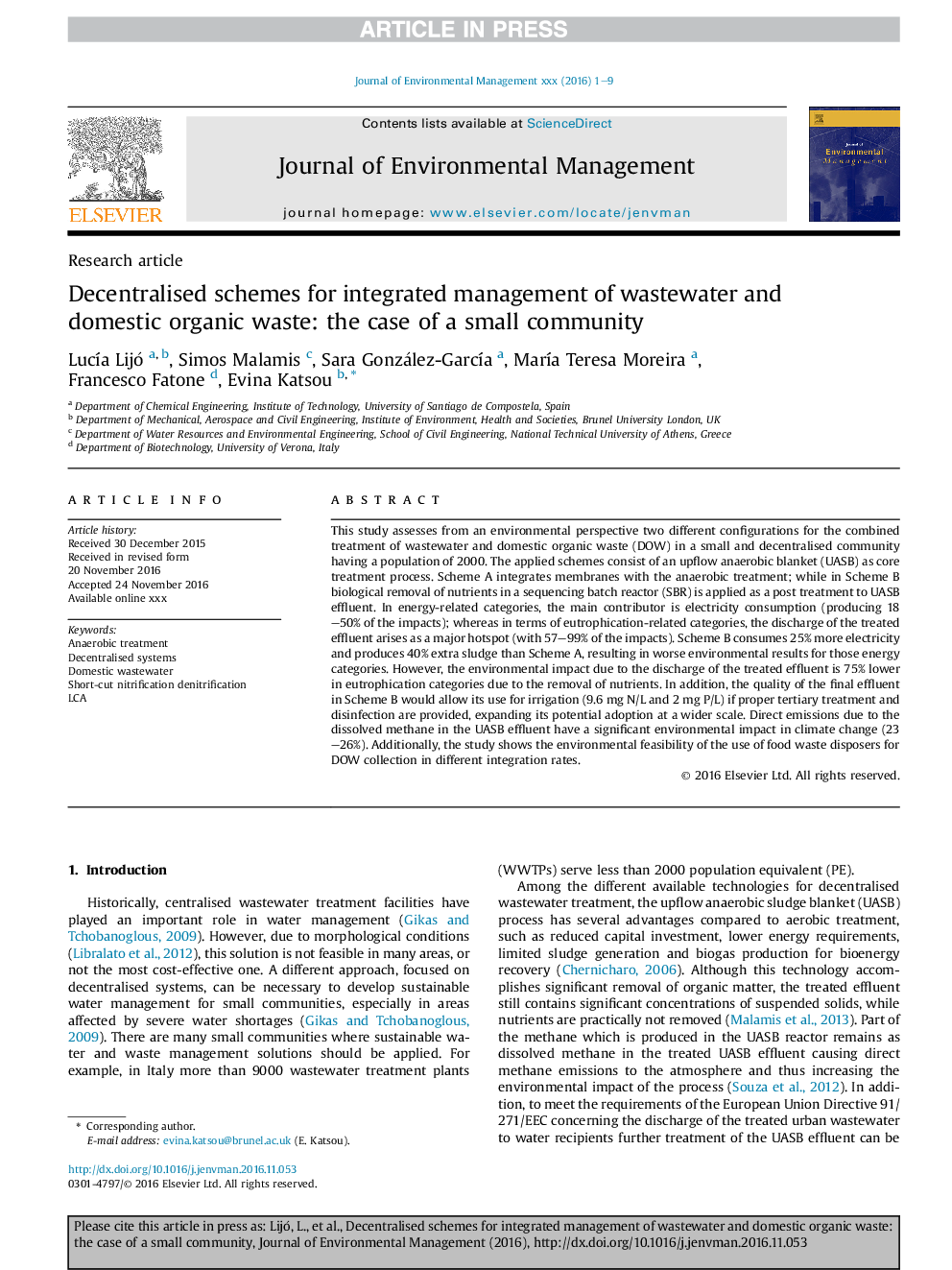| Article ID | Journal | Published Year | Pages | File Type |
|---|---|---|---|---|
| 5116431 | Journal of Environmental Management | 2017 | 9 Pages |
Abstract
This study assesses from an environmental perspective two different configurations for the combined treatment of wastewater and domestic organic waste (DOW) in a small and decentralised community having a population of 2000. The applied schemes consist of an upflow anaerobic blanket (UASB) as core treatment process. Scheme A integrates membranes with the anaerobic treatment; while in Scheme B biological removal of nutrients in a sequencing batch reactor (SBR) is applied as a post treatment to UASB effluent. In energy-related categories, the main contributor is electricity consumption (producing 18-50% of the impacts); whereas in terms of eutrophication-related categories, the discharge of the treated effluent arises as a major hotspot (with 57-99% of the impacts). Scheme B consumes 25% more electricity and produces 40% extra sludge than Scheme A, resulting in worse environmental results for those energy categories. However, the environmental impact due to the discharge of the treated effluent is 75% lower in eutrophication categories due to the removal of nutrients. In addition, the quality of the final effluent in Scheme B would allow its use for irrigation (9.6 mg N/L and 2 mg P/L) if proper tertiary treatment and disinfection are provided, expanding its potential adoption at a wider scale. Direct emissions due to the dissolved methane in the UASB effluent have a significant environmental impact in climate change (23-26%). Additionally, the study shows the environmental feasibility of the use of food waste disposers for DOW collection in different integration rates.
Related Topics
Physical Sciences and Engineering
Energy
Renewable Energy, Sustainability and the Environment
Authors
LucÃa Lijó, Simos Malamis, Sara González-GarcÃa, MarÃa Teresa Moreira, Francesco Fatone, Evina Katsou,
